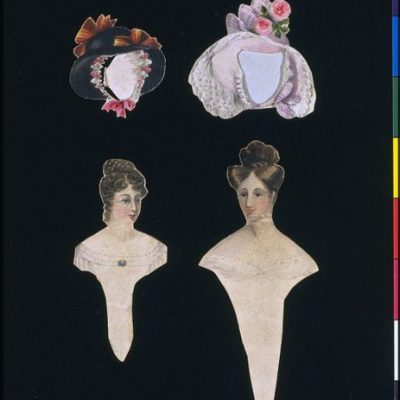
Fashion & History 13.03.2019
04.09.2018
English fashionexhibitionphotographyrunwaytumblr curation
Presenting the second part of the curation of Photoconsortium on EFHA Tumblr
After having wandered around the glamorous streets of Paris for last month’s guest curation – themed on the ‘promenading’ Parisian Couture of the beginning of the twentieth century – the second curation that sees PHOTOCONSORTIUM as guest-curator seems to stem from a completely different fashion universe. This time, our way-back-machine landed in England, during the 1920s and 1930s, where events such as the illustrious Ascot races were deemed “the best place in England to see beautiful women in beautiful clothes.” (The Times, 1922). While gentlemen can be spotted still wearing their traditional black waistcoats and pin-striped trousers, ladies’ fashion could not be more different from the elaborate ‘lingerie dresses’ that reigned a few decades earlier.
A striking feature of many a 1920s outfit depicted here is the low waistline, obscuring natural curves in favor of a ‘straight’, androgynous look. The big hairdos from the early 20th century made way for bobbed cuts, often crowned with a “cloche hat”. In the 1930s, once again, the pendulum seems to have swung to a less rigid, more feminine silhouette, inspired by the bias-cut introduced by Parisian couturiers. With fabrics now flowing along the curves of the female body, long satin gowns became all the rage. However, what stands out most in ladies’ 1930s fashion was the growing influence of day- and sportswear on occasion dress. Instead of full-length gowns, many women opted for wool suits with shoulder pads and (often pleated) knee-length skirts. Much-loved accessories were small hats, worn at an angle and decorated with feathers or flowers, as well as fur stoles and collars.
The looks spotted in these photos mirror what was happening in fashion in those years, not just in in England or Europe, but more generally in the West. The major changes in style, cut and materials responded to the new needs of a scenario that saw women more actively involved in the social life, and also more conscious of their role and also their power to ask for change.
In these years designers and couturiers had already developed strategies to promote and show their collections all around the world with ad-hoc presentations in department stories and press tours that turned into spectacles, so they did not need to ‘use’ the races as a runway anymore. However, the races remained an important stage for people to present themselves to society in the way they wanted to be considered (and remembered): as modernist, traditionalist, devoted to classicism or extremely revolutionary.
The monumental differences between the images presented for last month’s curation and the ones presented this month t seem to suggest a reinforcing factor was at play here. And that well could be the very different function of fashion at the horseraces in France and England respectively: while the former was clearly oriented toward (self-)promotion, public visibility and commercial/advertorial interests, the latter was more a matter of (social) codes, rules, formality and (class) distinction. The picture of the exquisitely yet exotically dressed Lady Hall, gazed after by sniggering bystanders, is a forceful reminder of what could befall women who – instead of the dress code – decided to follow their adventurous fashion sense…
The curation starts today – visit the EFHA Tumblr to see the amazing images coming from the archive selected by the guest curator Sofie Taes.
Sofie Taes has been working as an online curator of early photographic collections for the Europeana Photography Thematic Collection for several years. She is affiliated both with Leuven university (KU Leuven, Belgium) and PHOTOCONSORTIUM: an expert hub on historical photography, uniting the experience and knowledge of photography professionals from all over Europe.